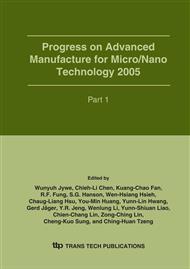p.685
p.691
p.697
p.703
p.709
p.715
p.721
p.727
p.733
An Elasto-Plastic Finite Element Analysis of the Hat-Type Drawing Process of Sheet Metal
Abstract:
This study aims to clarify the process conditions of the hat-type drawing of a sheet metal of steel. It provides a model that predicts not only the correct punch load for drawing, but also the precise final shape of products after unloading, based on the tensile properties of the material and the geometry of the tools used. An elasto-plastic incremental finite-element computer code, based on an updated Lagrangian formulation, was developed to simulate the hat-type drawing of sheet metal. In particular, selective reduced integration was adopted to formulate the stiffness matrix. The extended r-minimum technique was used to deal with the elasto-plastic state and contact problems at the tool-metal interface. A series of simulations were performed to validate the formulation in the theory, leading to the development of the computer codes. The whole deformation history and the distribution of stress and strain during the forming process were obtained by carefully considering the moving boundary condition in the finite-element method. Results in this study clearly demonstrated that the computer code for simulating the hat-type drawing process was efficient.
Info:
Periodical:
Pages:
709-714
Citation:
Online since:
January 2006
Authors:
Keywords:
Price:
Сopyright:
© 2006 Trans Tech Publications Ltd. All Rights Reserved
Share:
Citation:


